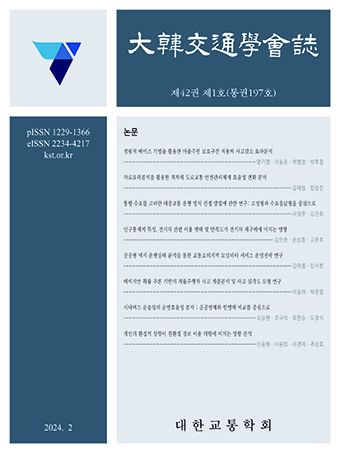Article
Abstract
References
Information
- Publisher :Korean Society of Transportation
- Publisher(Ko) :대한교통학회
- Journal Title :Journal of Korean Society of Transportation
- Journal Title(Ko) :대한교통학회지
- Volume : 36
- No :4
- Pages :240-250
- Received Date : 2018-05-17
- Revised Date : 2018-08-09
- Accepted Date : 2018-08-27
- DOI :https://doi.org/10.7470/jkst.2018.36.4.240



 Journal of Korean Society of Transportation
Journal of Korean Society of Transportation







